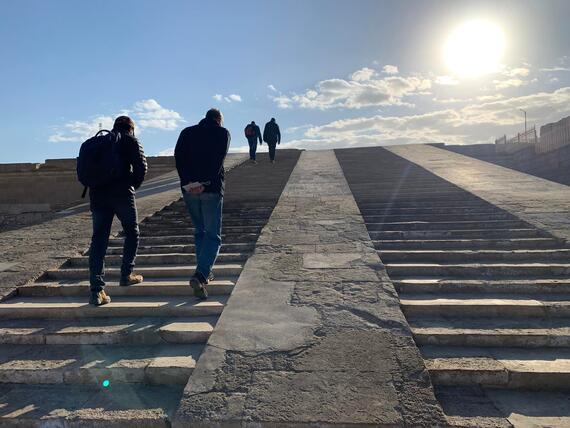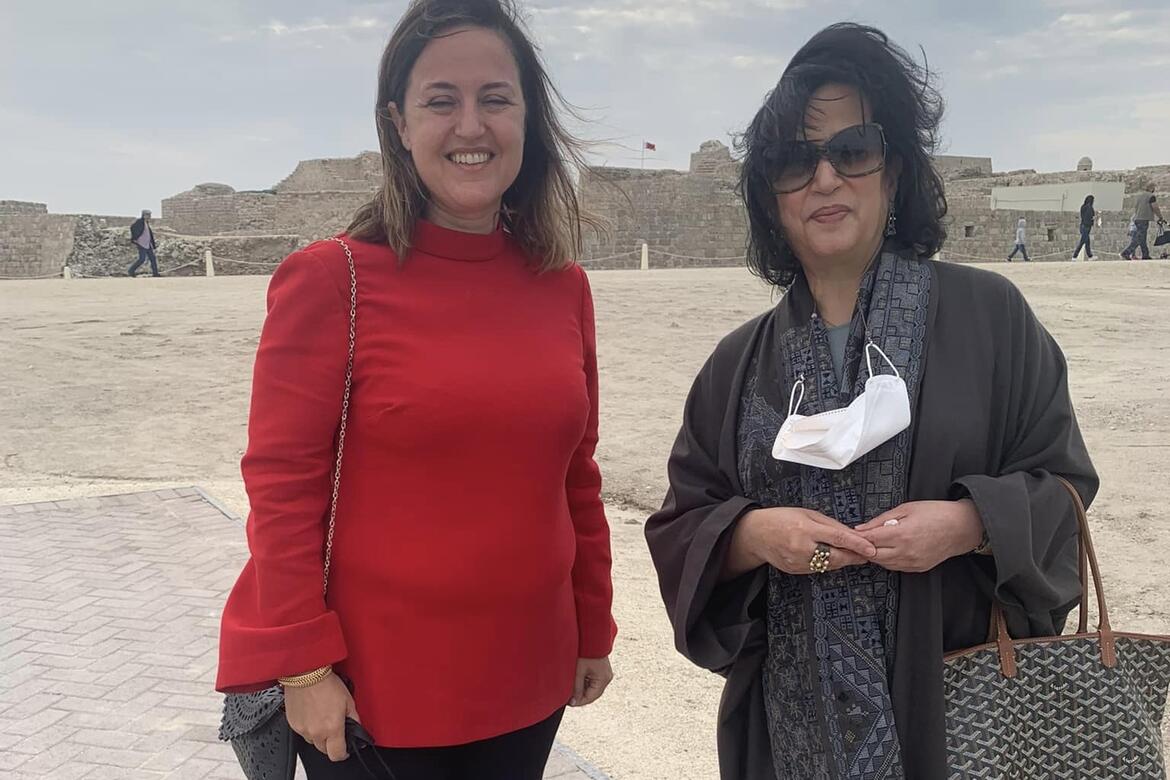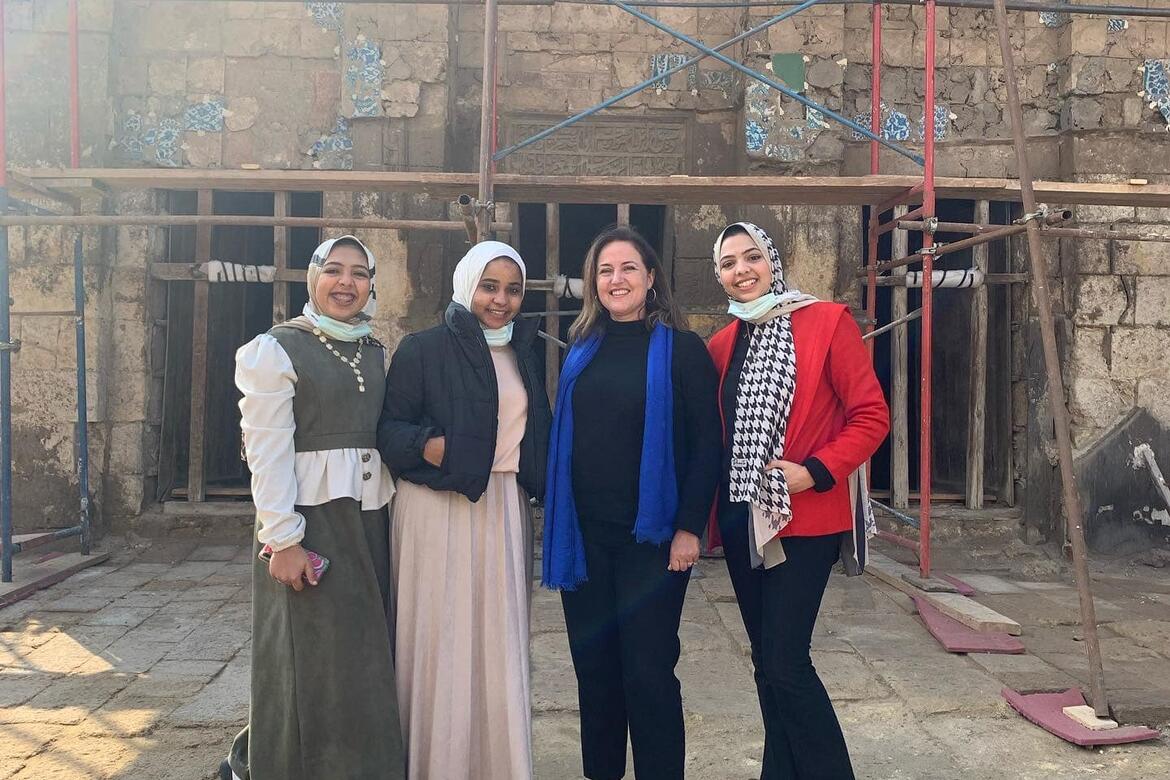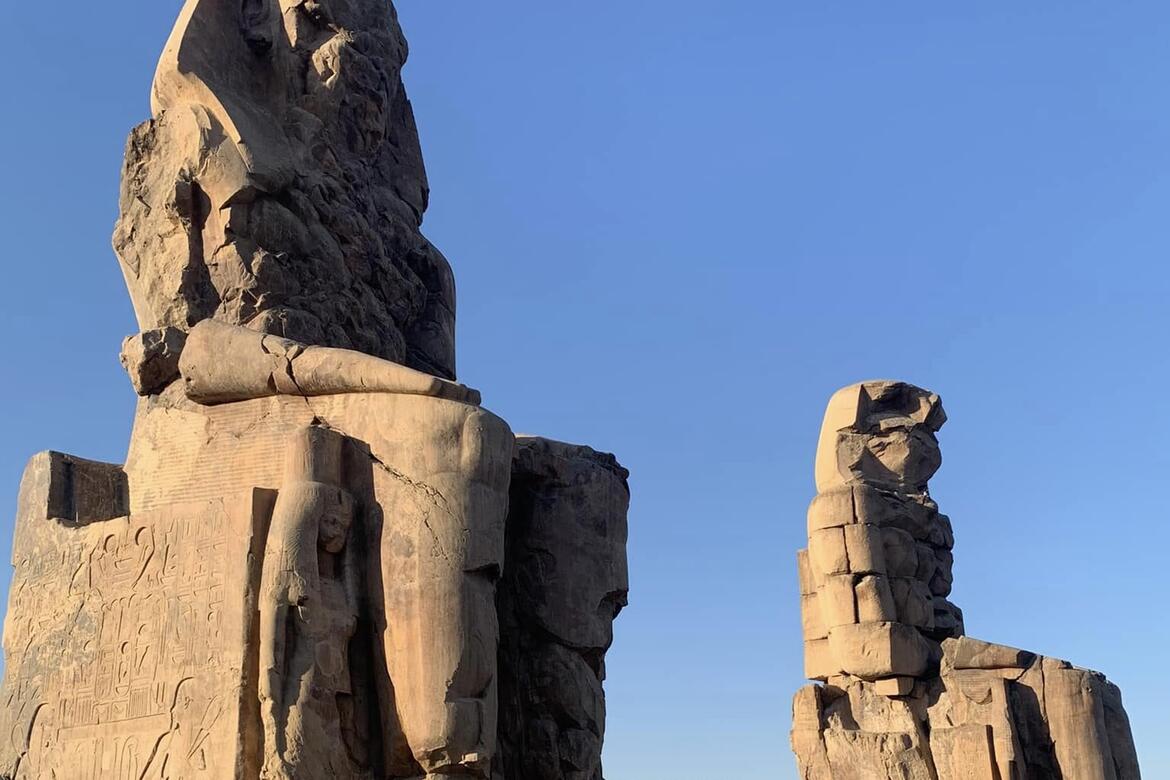Travelogue: Cultural Heritage in the Middle East

Over the last 25 years, World Monuments Fund (WMF) has launched more than 50 preservation projects across the Middle East, ranging from post-conflict emergency conservation and advocacy to the rehabilitation of historic urban centers, tourism management, and more.
This month, I had the opportunity to discover some of these projects in person, traveling in the region to meet with our local partners and see firsthand our work on the ground.
WMF Trustee Her Excellency Sheikha Mai bint Mohammed Al Khalifa, an extraordinary cultural heritage advocate in the Middle East, generously guided me through Bahrain's extraordinary built heritage. The preservation of traditional houses and cultural institutions in the rapidly developing country is awe-inspiring and showcases the importance of working with local leaders who can facilitate partnerships, advocacy efforts, and funding to ensure effective protection of cultural sites.
In Egypt, where WMF has been actively working for nearly three decades, I visited a few of our past and present projects. Two WMF World Monuments Watch sites, the White and Red Monasteries (2002) and the Colossi of Memnon (1998), visibly reflect the benefits of advocacy, as each site received essential funding from USAID and other private and institutional donors after inclusion on the Watch.
WMF’s current work at Takiyyat al-Gulshani, supported by the Ambassadors Fund for Cultural Preservation and the U.S. Embassy Cairo, integrates conservation with community engagement and cultural tourism planning. The stunning Sufi complex and mausoleum dates back to the sixteenth century and is located in an area of Islamic Cairo that, while not on the typical visitor itinerary, has exceptional historical significance. Our goal is to continue to collaborate with our Egyptian partners and develop a model project for sustainable preservation that will provide economic and social benefit to the local community.
The incredibly rich heritage of the Middle East is a source of inspiration as it showcases the exchange, struggles, and dialogue between the diverse civilizations that inhabited the region over the last 5,000 years. I continue to be inspired and amazed by the hard work of our teams to safeguard these invaluable sites, and I am deeply grateful to WMF Trustees Her Excellency Sheikha Mai bint Mohammed Al Khalifa and Mr. and Mrs. Peter Kimmelman for generously sponsoring this trip.
I encourage you to learn more about our work around the region by exploring our past and present projects or by reading some of the excellent publications in our online library.
With appreciation,
Bénédicte de Montlaur
President and CEO







